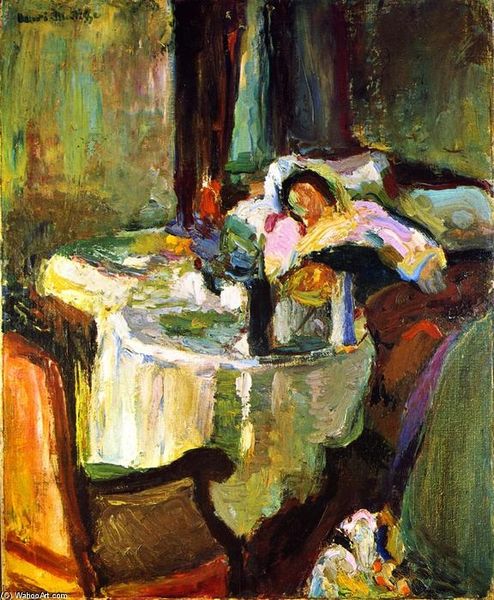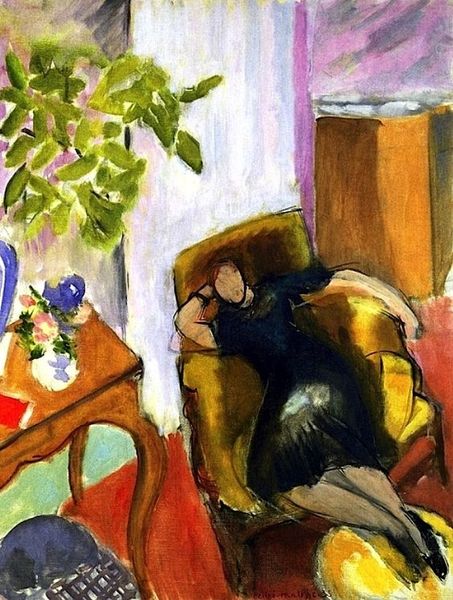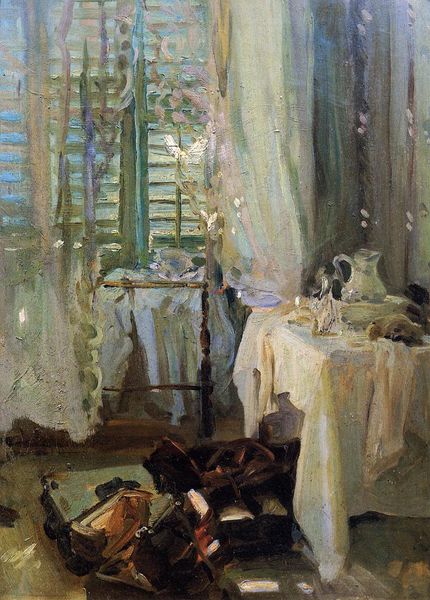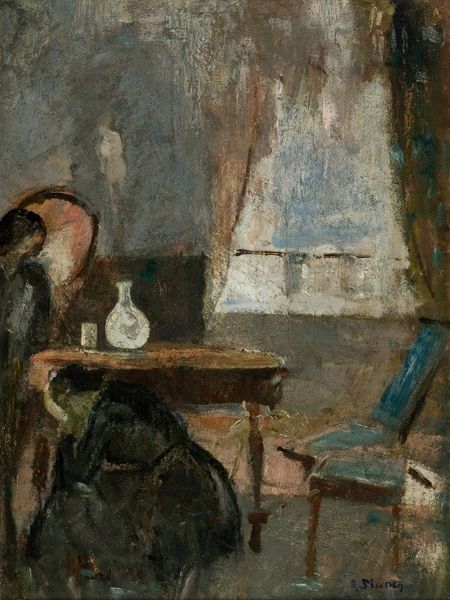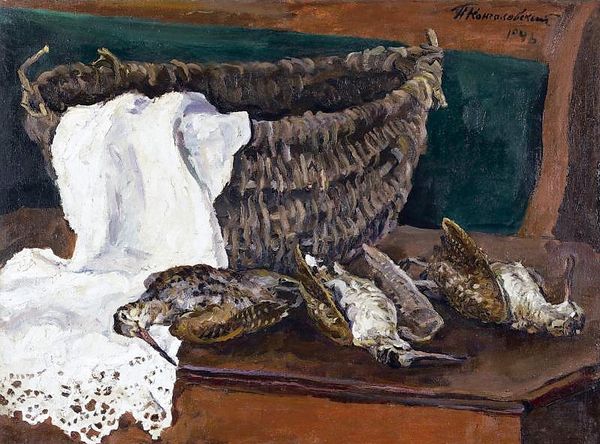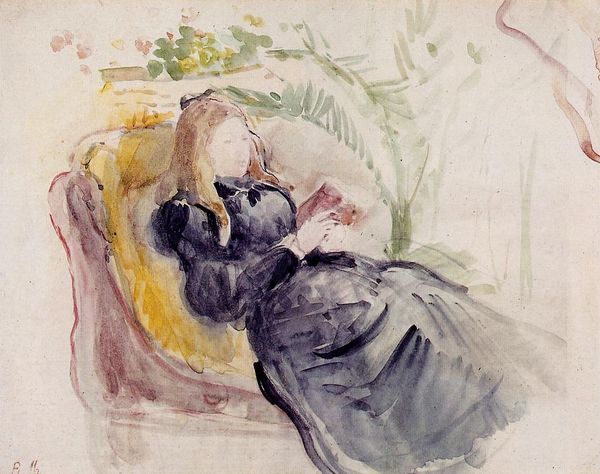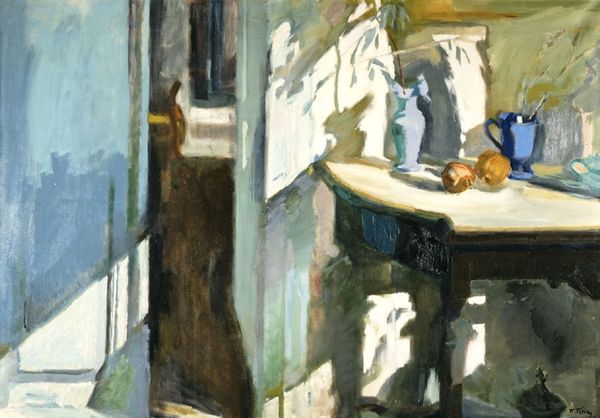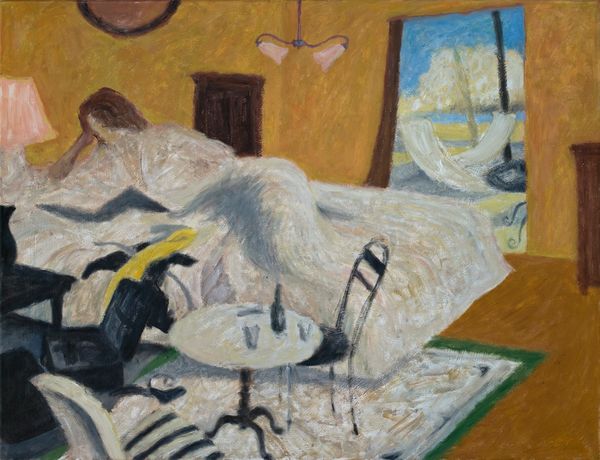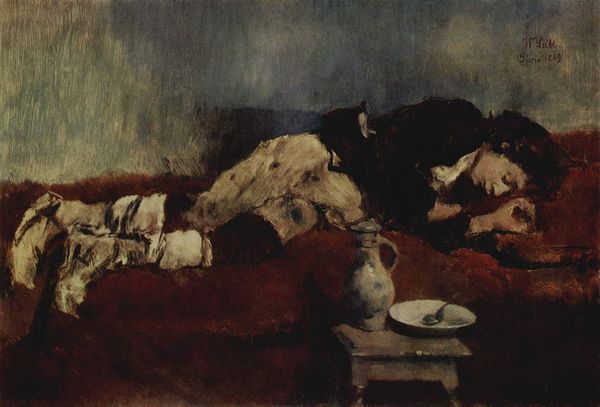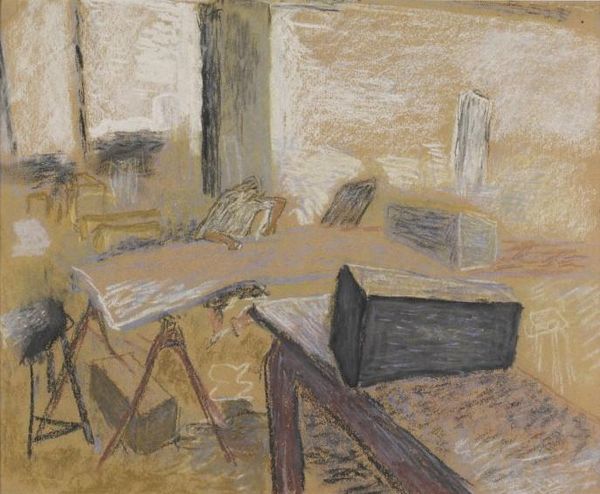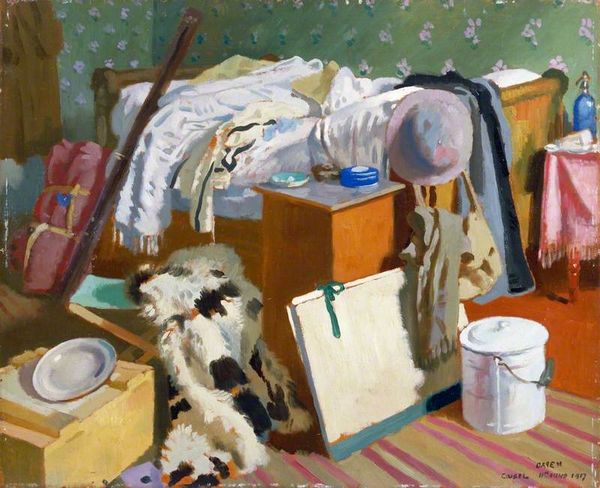
#
abstract painting
#
impressionist landscape
#
possibly oil pastel
#
oil painting
#
fluid art
#
acrylic on canvas
#
underpainting
#
painterly
#
painting painterly
#
watercolor
Copyright: Public domain US
Editor: This is Henri Matisse's "My Room in Ajaccio," painted in 1898. It's a wonderfully intimate depiction of what appears to be a bedroom interior, and I am immediately drawn to its stillness, its hushed quality. What do you see in this piece? Curator: I see a potent symbol of interiority, a deeply personal space rendered with an almost dreamlike quality. The objects, like the bed and rug, aren't just furniture; they're fragments of a lived experience, laden with memory. Notice how the painting eschews a sharp focus. Do you think that softens the imagery, almost inviting you into a private recollection? Editor: Absolutely! It’s like stepping into a memory. The soft focus definitely adds to that sense of intimacy. But why do you think he chose these specific objects to portray his sense of "home"? Curator: Consider the bed, not just as a place of rest, but of dreams, of beginnings and endings. It’s a powerful symbol, and its placement in the composition centers the entire room around it. The rug might represent grounding, connection to a place, while also offering a repetitive visual motif which our subconscious mind easily recognizes. This combination works together, speaking to comfort and rootedness. Is that how you perceive those elements as well? Editor: That makes perfect sense, especially about the repetitive pattern offering a feeling of stability and "home." Thanks, I hadn't quite considered the subconscious in my understanding of this work. Curator: The symbolic language of art is a universal human experience that stretches across cultures. Recognizing that is like unlocking a secret meaning within art. Editor: Definitely. I’ll never look at another room scene quite the same way again. Curator: Me neither. It's been fascinating to explore the psychology behind these familiar images.
Comments
No comments
Be the first to comment and join the conversation on the ultimate creative platform.

